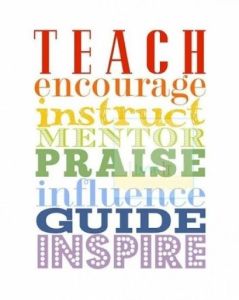by Valarie Swayze, Senior Editor, INALJ Alabama, Alaska, Arizona, Arkansas, Colorado, Connecticut, Delaware
Find a Mentor, Be a Mentor
 Serving as a mentor is an excellent opportunity to serve others that can also contribute to your own personal and professional growth. A mentor can be anyone who is willing to invest time and commit to helping one accomplish his or her goals. Ideally, a mentor is also a mentee. Serving in both roles can increase your value as a mentor and provide an enhanced perspective from which to answer questions and guide your own mentee. The following articles highlight different types of mentoring, how to be an effective mentor, and the mentor-mentee relationship.
Serving as a mentor is an excellent opportunity to serve others that can also contribute to your own personal and professional growth. A mentor can be anyone who is willing to invest time and commit to helping one accomplish his or her goals. Ideally, a mentor is also a mentee. Serving in both roles can increase your value as a mentor and provide an enhanced perspective from which to answer questions and guide your own mentee. The following articles highlight different types of mentoring, how to be an effective mentor, and the mentor-mentee relationship.
Mentoring Skills – This article from MindTools notes the differences between two types of mentoring: developmental & sponsorship. The skills discussed focus on developmental mentoring, and can help you learn how to be an efficient mentor by providing feedback and setting regular meetings.
Exploring Mentoring: Professional Development through Relationship Building (by Braegan C. Abernethy and Kari D. Weaver) – Terrific resource to help one understand the potential benefits of being a mentee or a mentor. The authors provide advice for finding a mentor through an established program or independently and helps one plan for success through having well-defined goals and expectations of the mentor/mentee program.
How to Ask Someone to Mentor You (by Kim Dority) – Kim Dority tackles the challenging topic of how to find a mentor that is well-suited to help you identify and achieve your goals. Also, just as important, she provides guidance on how to ask for help. Being a mentor can be a large commitment; therefore, it makes most sense to have clear objectives and a candidate identified prior to getting started.
Mentoring Presentation Slideshow (by Kirstie Preest) – A basic introduction to mentorship programs. In addition to defining roles and goals, this slideshow also describes the importance of defining mentor/ mentee expectations through creating a mentorship agreement.
How to Be a Great Mentor (by Jacquelyn Smith) – The author of this article shares that mentoring is a big responsibility which can bring a great deal of personal satisfaction. Nine ways to be a great mentor are noted, one of which discusses the importance of being both a mentor and a mentee.
Mentoring in Small Business (by Michael Nelson) – The author includes basic information about mentor programs and provides an infographic from Sainsbury Management Fellows that describes mentorship. This infographic defines key elements of the mentorship process, and is a perfect visual aid for conveying the goals of mentorship.
The 3 Career Mentors Everyone Should Have (by Noelle Roth) – This article suggests identifying and working with a different mentor for short-term goals and long-term goals. In addition, another mentor may serve as a career advisor to help plan a rewarding professional development path. The author also provides suggestions for how to find mentors for each category.
ALA NMRT Career Mentoring Guidelines – The New Members Round Table (NMRT) mentorship, organized by ALA, is a formal mentorship program for library professionals (requires ALA membership). The program introduces mentoring and defines qualifications to serve as a mentor and to be a mentee, expectations of both roles, and benefits of mentorship.
Feed your Career Octopus: Tips for Finding and Keeping Awesome Mentors (by Meredith Fineman) – This article also highlights basic knowledge of mentorship concepts and tips for a successful mentor relationship. The author emphasizes mentee obligations and discusses why it is not necessary that a mentor be in your field.
Photo Credit: Pinterest